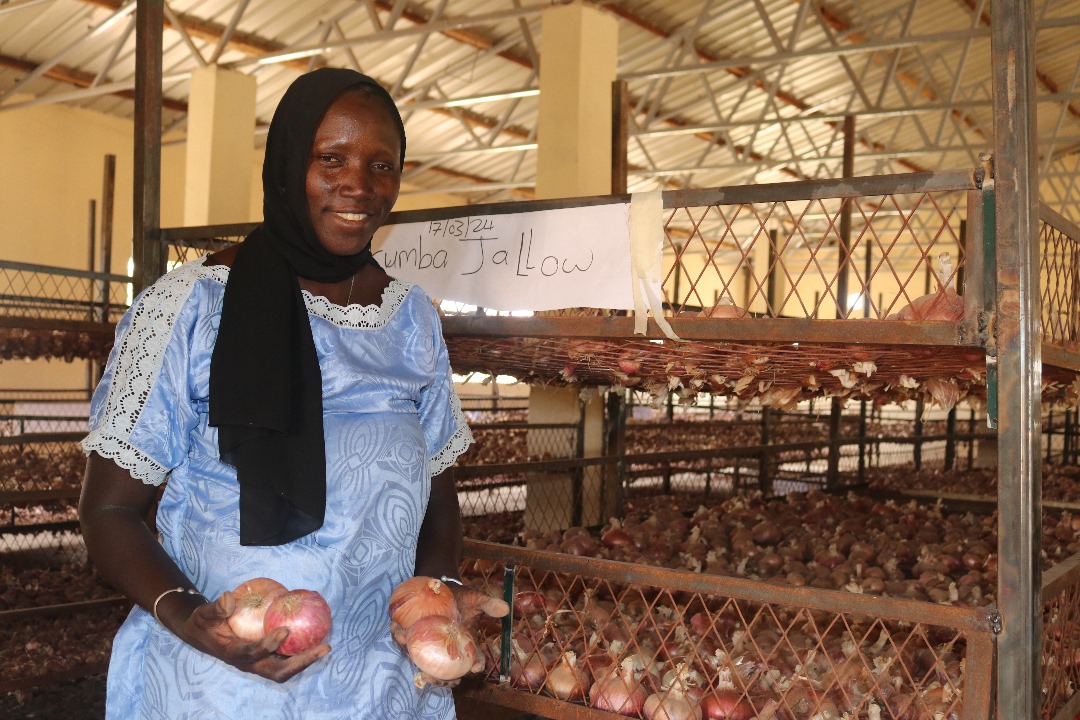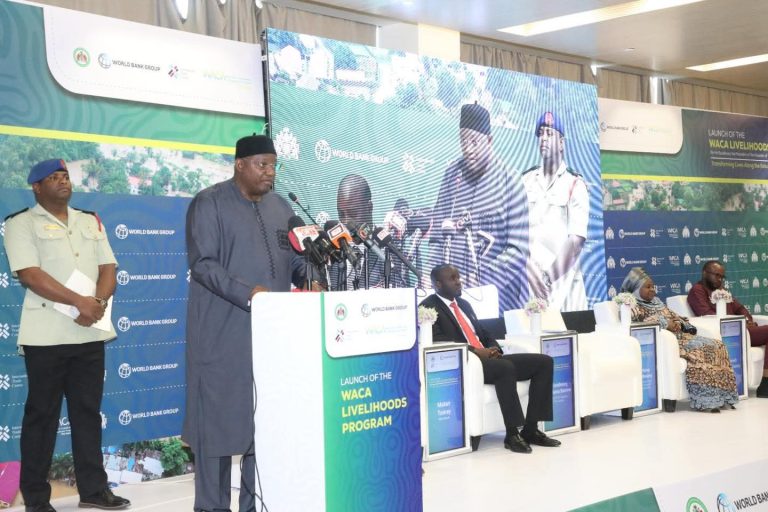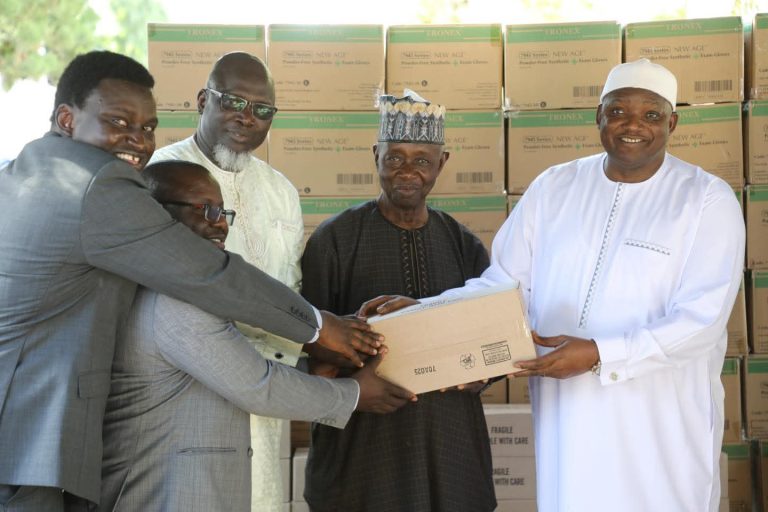
By: Modou Touray
The Gambia produces about 20% of its total onion consumption. And even so, a large chunk of it is lost before the producers see a profit. They are grappling with several post-harvest challenges, and at the heart of this menace is the absence of a curing and storage facility. For the women of Berefet in the West Coast Region, Nanaba, and Jahuar Mandinka in the Central River Region, this seemingly unending cry is now a thing of the past.
With funding from the European Union, the United Nations Industrial Development Organization’s (UNIDO) West Africa Competitiveness Programme (WACOMP) in The Gambia has constructed three curing, packaging, and storage facilities, offering hope and a new lease of life to the producers of these communities.
For decades, these beneficiaries, after every harvest, find themselves with a large quantity of onions that they must put on the market as they do not have adequate storage facilities. As a result, they are compelled to sell at reduced prices or risk losing their produce at all. First, of its kind in the country’s 4-decade onion production history, the facilities are 37.7 meters long and 15.6 meters wide, with two compartments: one for curing and sorting harvested onions after field drying and the other for grading, weighing, packaging, labeling, coding, and storage.
With a capacity to store 20 tons at any given time while another lot of harvested onions from the field is being cured, this pioneering initiative is expected to directly benefit 700 women and 28 men onion growers.
“We used to store our harvested onions in empty spaces in our rooms and even under our beds. We did not have space to even cure them; we just harvest and pile them in the limited spaces we have,” said Kumba Jallow of Jahuar Mandinka village, whose garden now has a standard curing and storage facility. She expressed optimism that their income will significantly increase this season as the facility will provide them with an opportunity to properly cure, sort, store, and sell their onions at their convenience.
As President of the Garden, Kumba carries a huge burden of not just leading a producer group of 175, but also the continued search for remedies to the challenges they grapple with. In addition to the facility, UNIDO WACOMP supplied empty onion bags, pallets, sewing machines, and weighting machines to help add value to their produce and increase their competitiveness. Numerous trainings on best post-harvest handling practices were provided to onion producers from 120 gardens across the country.
“The women used to cure their onions under a tree and then store them in their homes. With the promise of a storage facility last year, onion production has significantly increased this year,” recalled Binta Daffeh, the Agricultural Extension Officer supervising Berefet Garden.
She commended the strong leadership of the garden and assured that the facility would be judiciously utilized and properly maintained for generations to come.
“UNIDO and the EU are complementing the efforts of The Gambia. As a ministry, we wish to develop the vegetable sector so that it can be more beneficial for the producers. This store will go a long way in increasing the quality of the onions and attracting higher prices in the markets,” said the Director of Agriculture at the West Coast Region, Bakary Gassama.
During a visit to the facility in Berefet, Lumana Kamashi, the Development Cooperation Officer of the EU Delegation in The Gambia, was overly delighted over the completion of this milestone. Her office, she said, is proud to be associated with the development, expressing optimism that the new facilities will exponentially boost onion production and enhance the competitiveness of the gardens.
For his part, UNIDO Project Administrator Christian Lasser noted that the facilities will increase the competitiveness of the beneficiary gardens through enhanced quality and compliance along the onion value chain. He credited the cordial cooperation that exists between the project and the government of The Gambia, saying the facilities will go far enough in complementing government efforts concerning the implementation of food quality and safety standards at primary production.




